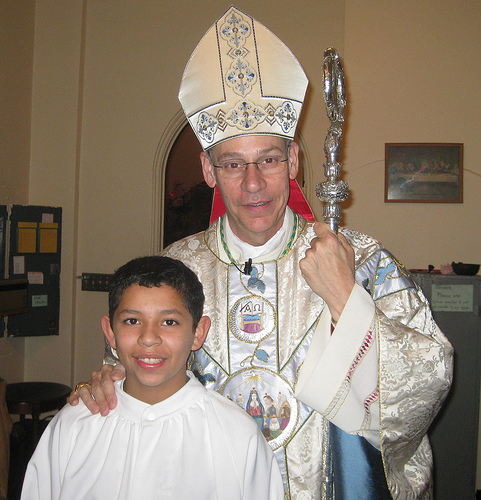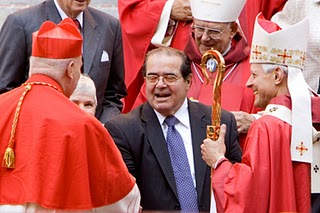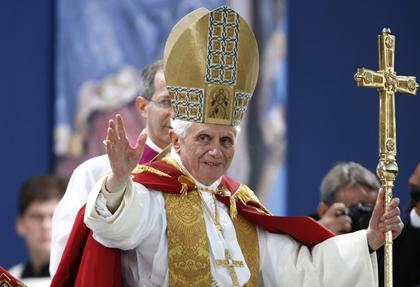Alleging that the Kansas City-St. Joseph diocese broke a series of legal obligations in its mishandling of sexual misconduct by clergy, a law firm representing abuse victims today filed a formal complaint that could force the diocese to accept third-party supervision of its reporting procedures.
The complaint, filed this afternoon by attorneys Rebeccca Randles and Jeff Anderson, alleges that the diocese broke a 2008 settlement between the diocese and 47 victims of sexual abuse which put in place a series of commitments the diocese had agreed to follow in its sex abuse reporting policies.
Speaking in a phone interview, Randles said her firm decided it had to pursue a formal arbitration process with the diocese over the 2008 agreement to ensure that future cases of misconduct are not mishandled.
The lawyers are asking for “continuing supervision” of how the diocese responds to cases of sexual misconduct, she said, and are “looking for a mechanism to enforce the provisions of the settlement agreement from this day forward, so that there is some form of continuing watch-dogging.”
David Clohessy, the executive director of the Survivors Network of Those Abused by Priests, called the complaint a “historic, crucial step.”
“For decades bishops have made and broken promises about childrens’ safety with no consequences, penalty, punishment, or enforcement,” Clohessy said in a phone interview. “That has been and remains the crux of this ongoing crisis. Someone has to do something to make sure that Catholic officials do what they pledge to do.”
Referring to the fact that the new complaint makes no call for additional monetary payments to the 47 victims for the possible breach of the agreement, Clohessy said the focus on the complaint is prevention of further abuse.
“Throughout the settlement process, the victims stressed that most important of all, they wanted to push for steps for prevention, to ensure that sexual abuse did not happen again,” said Clohessy. “They just want to use whatever small clout the justice system gives them to force reforms.”
Citing from a Sept. 1 diocesan-sponsored report of its handling of cases of sexual misconduct, which found that “diocesan leaders failed to follow their own policies and procedures” for responding to reports of sexual misconduct, the complaint says that report acts as an “admission by defendants” of their breaking the 2008 agreement.
Today’s complaint calls for the circuit court of Jackson County, Mo., where diocesan headquarters are located, to force the diocese to enter into arbitration over the possible violations and to “compel compliance” with the 2008 agreement.
In response to an NCR query, a spokesperson for the Kansas City diocese said in an e-mail that the diocese had provided the victims “a comprehensive accounting of all actions” regarding sexual misconduct and cited a June 20 “Community update” letter outlining 19 steps the diocese has taken since 2008 to ensure compliance with the settlement.
The diocese hired former U.S. attorney Todd Graves to investigate how the diocese handles cases of sexual misconduct as part of Bishop Robert Finn’s response to questions that he had mishandled the case of Fr. Shawn Ratigan, a diocesan priest who was arrested on charges of child pornography in May.
Graves’ Sept. 1 report, which totaled 138-pages, included testimony from Finn and vicar general Msgr. Robert Murphy, and concluded that the diocese’s handling of Ratigan, and other cases of sexual misconduct by clergy, “could have jeopardized the safety of children in diocesan parishes, school, and families.”
The lawyers’ complaint filed today cites 17 examples of conclusions found in the Graves Report that, it says, “establish breaches of the settlement agreement.” The supposed breaches cover a variety of incidents, but many center around the diocese’s response to Ratigan.
Ratigan is in jail on charges filed in Clay County, Mo. A federal grand jury charged him in August with 13 counts of production, attempted production and possession of child pornography.
Media reports have indicated that grand juries in Jackson County, Mo., and Clay County, Mo., are also investigating the matter and have heard testimony from Finn and Murphy.
Among the commitments made by the diocese in the 2008 agreement are vows that the diocese would report sex abuse allegations to law enforcement “at the request of the victim” and that it would follow its own published policies regarding reports of sex abuse. While the original agreement also awarded $10 million between the 47 victims, today’s complaint does not seek additional monetary relief.
Much of the controversy surrounding the diocese’s response to Ratigan centers around how it treated warnings of misconduct by the priest, when it decided to remove him from ministry, and when police were notified of child pornography found on his laptop.
- Among the examples cited in the complaint to allege the diocese broke the 2008 agreement which reference testimony provided in the Graves Report:
- The failure of the diocese to “pursue complaints” about Ratigan which were raised by Julie Hess, the principal of the school attached to Raitgan’s parish, in May, 2010, alleging that the priest “fit the profile of a child predator” and spent too much time with students;
- The failure of the diocese to disclose that nude photographs of children were found on Ratigan’s laptop in Dec., 2010, until May, 2011;
- That the diocese “took no steps to notify parents and families” at Ratigan’s parish of the questions surround the priest;
- That the diocese “enabled Fr. Ratigan to have contact with children” when it moved him to a house of Vincentian priests connected to a retreat center run by Franciscan sisters in January, 2011.
The lawyers first called for arbitration with the diocese over the 2008 agreement in June. In an exchange of letters between the firm and diocesan counsel, a lawyer representing the diocese wrote June 20 that the diocese “has complied with and continues to comply with” each of the terms of the agreement.
The complaint says that since that exchange, diocesan lawyers have denied the settlement provides for arbitration and, “unless ordered by the court, defendants will continue to refuse to engage in arbitration over the breaches claimed by the plaintiffs.”
In her email, Rebecca Summers, the diocesan director of communications, pointed to the diocese’s July appointment of an ombudsman to receive reports of claims of sex abuse and a five point plan outlined by Finn in June to show that the diocese is in compliance with the 2008 agreement.
Since that plan, Summers wrote, the diocese has “implemented changes and reforms that guide its response to reports of child sexual abuse.”
Full Article HERE!




